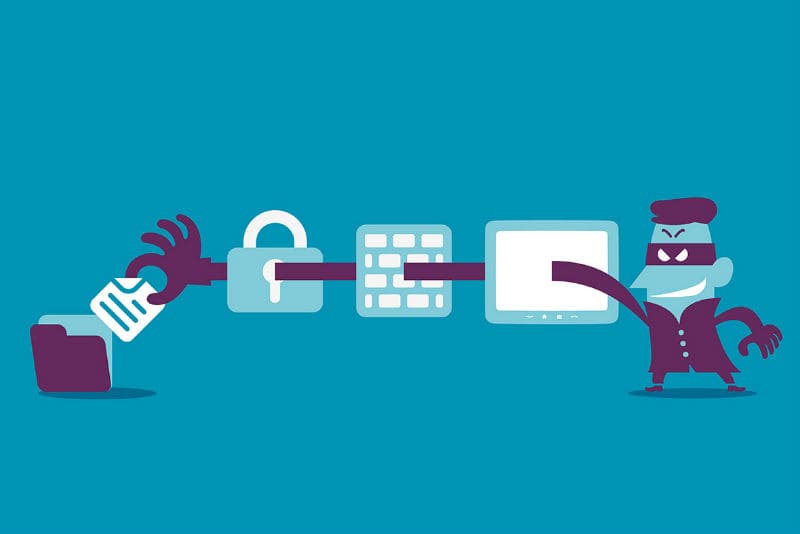Most modern businesses and organizations maintain an online presence, and the number of cyberattacks against them climbs steadily year after year. Attackers often hunt for vulnerabilities in their IT networks that would allow them to access sensitive data.
Vulnerability management solutions address this problem by taking a more active and forehanded approach. They aim to remove entry points that could let attackers get into your system in the first place.
Learn more about them below.
What Is Vulnerability Management?
Vulnerability management is the process of identifying, evaluating, mitigating, and reporting on security flaws and weaknesses. This is a proactive strategy involving both hardware and software across workstations and endpoints. It is designed to minimize damage caused by vulnerabilities that may expose an IT system to unauthorized access and modifications.

Vulnerability management is more than just scanning for and patching vulnerabilities. It needs careful planning and involves several more steps.
Organizations need frequent assessments to get a clearer idea of their systems and create a better action plan to safeguard them. They should take into account new hardware and modifications added to the infrastructure over time, including new vulnerabilities.
Effective vulnerability management should track down and remove all serious security flaws from an IT system. By lowering the risk profile, this ongoing process prevents not just potential attacks against the system but also their associated financial loss.
Read more: Best Cybersecurity Tips For Leaders
How Vulnerability Management Works
Vulnerability management isn’t a one-time campaign. This cyclical practice can be broken into four stages that will be repeated again and again.
Identify Vulnerabilities
Discovering existing flaws in an IT system is at the heart of any vulnerability management program. Organizations can rely on methods like vulnerability scanning, penetration testing, and log analysis. Many of them can be automated and done on a periodic basis. These inspections are critical and will determine the rest of your mitigation strategy.
Evaluate And Prioritize Vulnerabilities
After becoming aware of vulnerabilities, it is time to assess and categorize them based on the risk they could pose to your organization. This decision-making phase allows you to respond to those threats in the most effective manner.
Frameworks like the Common Vulnerability Scoring System (CVSS) can help determine the severity of vulnerabilities. They use several metrics to score and rate a particular vulnerability, such as its exploitation difficulty or whether someone outside of your network can exploit it.

The importance of the asset also plays a huge role in determining whether you should focus on the vulnerabilities targeting it. Mission-critical infrastructure deserves a higher priority, for example. You should always add these contexts when prioritizing vulnerabilities for remediation.
Treat Vulnerabilities
Once you have validated security threats on your system, you will need to choose the most suitable treatment option.
It could be a full remediation, which involves patching or fixing a vulnerability. This is the ideal solution, as it makes the flaw disappear and is no longer prone to exploitation. After implementing your fixes, make sure to run another scan to confirm you have successfully resolved the vulnerability.
However, a complete and proper fix isn’t always available right away. Mitigation methods can step in and reduce the possibility and impact of exploitation in the meantime. They can buy time for your organization before a more permanent solution appears.
For low-risk threats, the cost of fixing them may be too high compared to the worse outcome when they are exploited. In these situations, it isn’t unusual to just acknowledge them and then take no action to fix those issues.
Report Vulnerabilities
Most vulnerability management solutions come with a variety of reports and dashboards. You can use them to export and display data generated from vulnerability scans for different audiences.
IT teams will have an easier time figuring out which techniques could help them fix vulnerabilities with the least amount of work, or tracking vulnerability trends within the network.
From these reports, managers and executives can understand the current state of security risks in their organizations. On top of that, it also helps them meet regulatory and compliance requirements.
Why Vulnerability Management Is Important

Malicious actors continue to refine their methods for targeting your information assets. However, exploiting vulnerabilities remains a common tactic.
Without software upgrades and other cybersecurity measures, your business is inviting intruders into your environment. Once they become aware of its vulnerabilities, they will utilize every available means to get access to your system.
Detecting these weak spots in your IT system, assessing the risk present there, and determining how to guard against exploitation is a crucial aspect of the security posture of any business.
Vulnerability management doesn’t just offer the needed tools to avoid unauthorized network access and data breaches. These solutions also help IT professionals recognize how cybercriminals exploit system vulnerabilities.
They allow each organization to select the best course of action to avoid the potential fallout of those flaws. Because threat actors have nothing to manipulate or exploit in the first place, there will be fewer possibilities for them to enter and infiltrate your system.
Summary
Vulnerability management goes beyond scanning and patching security flaws and weak spots. It demands a more regular and active approach to vulnerabilities – sometimes a change in mindset from your organization. But when properly implemented, vulnerability management solutions can shorten the lifespan of vulnerabilities and minimize the risk they pose to your organization.
CyStack’s experts use a risk-based approach to identify and remove vulnerabilities from infrastructure, code, and other assets on a continuous basis. We can unburden your internal IT teams from these essential but tedious tasks, giving you more resources to focus on other goals and grow your business.
Contact our representatives to learn more about our Vulnerability Management services.
 4 minutes read
4 minutes read
